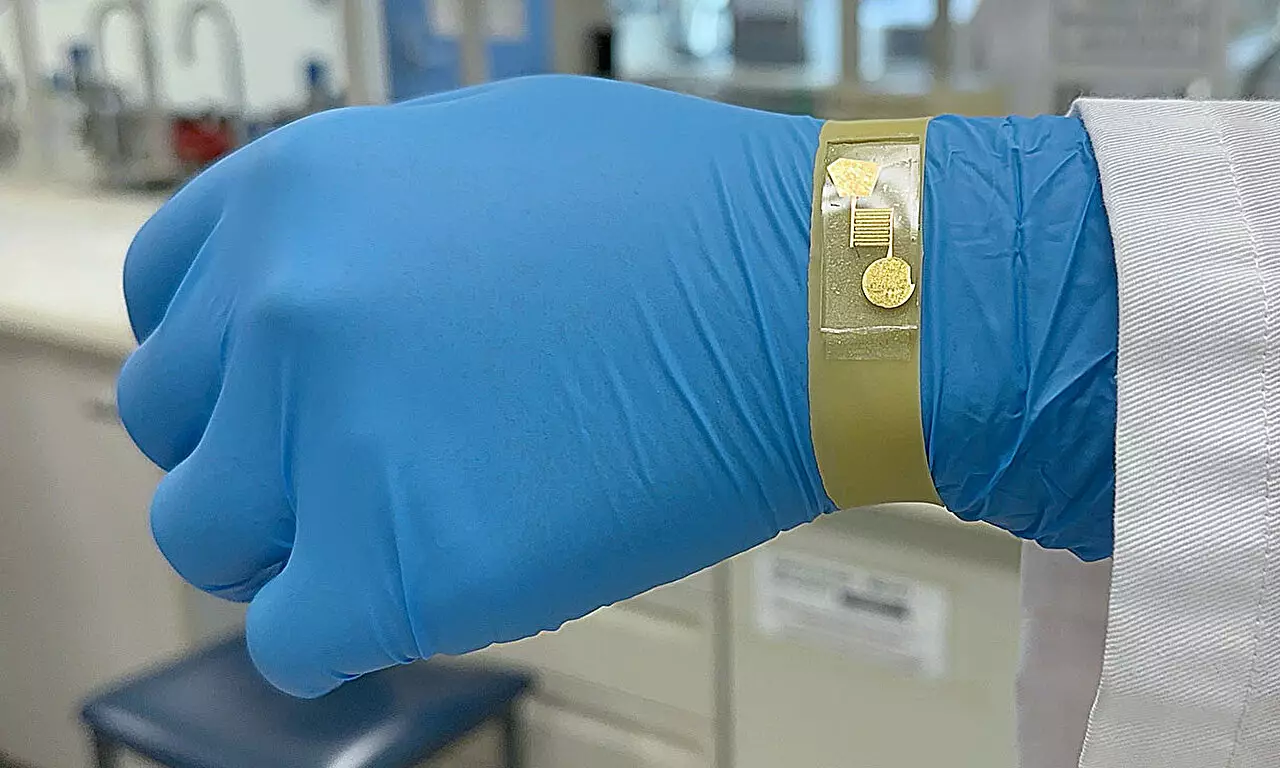Engineers in Australia have recently developed a groundbreaking technology in the form of a small ammonia gas sensor that has the potential to revolutionize hydrogen storage and medical diagnostics. This simple yet highly effective proof-of-concept sensor, described in an article published in Advanced Functional Materials, is the result of collaborative research by experts from RMIT University, the University of Melbourne, and the ARC Centre of Excellence for Transformative Meta-Optical Systems (TMOS).
Ammonia gas poses several risks to human health, such as chronic lung conditions and irreversible organ damage. However, as ammonia is considered one of the best ways to store hydrogen for clean fuel, its use is expected to increase significantly in the future. To ensure safe operation and transport of hydrogen, reliable and sensitive ammonia detection is crucial for promptly identifying and addressing potential gas leaks.
Apart from its potential benefits in hydrogen storage, ammonia gas holds great importance in the field of medical diagnostics. Ammonia is found in human breath and serves as a vital biomarker for the diagnosis of various diseases, including kidney and liver-related disorders. The team of researchers behind this innovative sensor believes that by leveraging its ability to measure minute amounts of ammonia, the sensor could be engineered to detect the gas in breath, thereby enabling early diagnosis of health disorders.
The newly developed sensor features atomically thin transparent tin dioxide, which exhibits exceptional capabilities in tracking ammonia at levels significantly lower than other existing technologies. Acting like an electric “nose,” the sensor not only detects even the smallest amount of ammonia but also demonstrates superior selectivity in distinguishing it from other gases.
To evaluate the sensor’s performance, the research team conducted experiments in a specially designed chamber, subjecting it to various levels of ammonia gas concentrations (ranging from 5-500 parts per million) under different environmental conditions, including temperature. They also compared the device’s selectivity for ammonia against gases like carbon dioxide and methane.
The miniaturized sensor offers several advantages over traditional ammonia detection techniques. Compared to current methods that require expensive laboratory equipment and trained technicians, this sensor provides a safer, less cumbersome, and portable solution. Its affordability and scalability also make it an attractive option for mass production, as the tin oxide film used in the sensor can be easily deposited on various base materials.
The successful development of this ammonia gas sensor opens up new avenues for enhancing safety in hydrogen storage and enabling early detection of health disorders through breath analysis. With further advancements and refinements of the technology, the sensor could become an integral component of portable medical diagnostic devices, empowering healthcare professionals to make faster and more accurate diagnoses.
The collaborative efforts of engineers from RMIT University, the University of Melbourne, and the ARC Centre of Excellence for Transformative Meta-Optical Systems have led to the creation of a pioneering ammonia gas sensor with diverse applications. Not only does this sensor promise safer hydrogen storage by efficiently detecting ammonia leaks, but it also holds immense potential for revolutionizing medical diagnostics, allowing for the early detection of diseases through breath analysis. This breakthrough technology could pave the way for a safer and healthier future, where hydrogen fuel and medical diagnoses become more efficient and accessible.


Leave a Reply